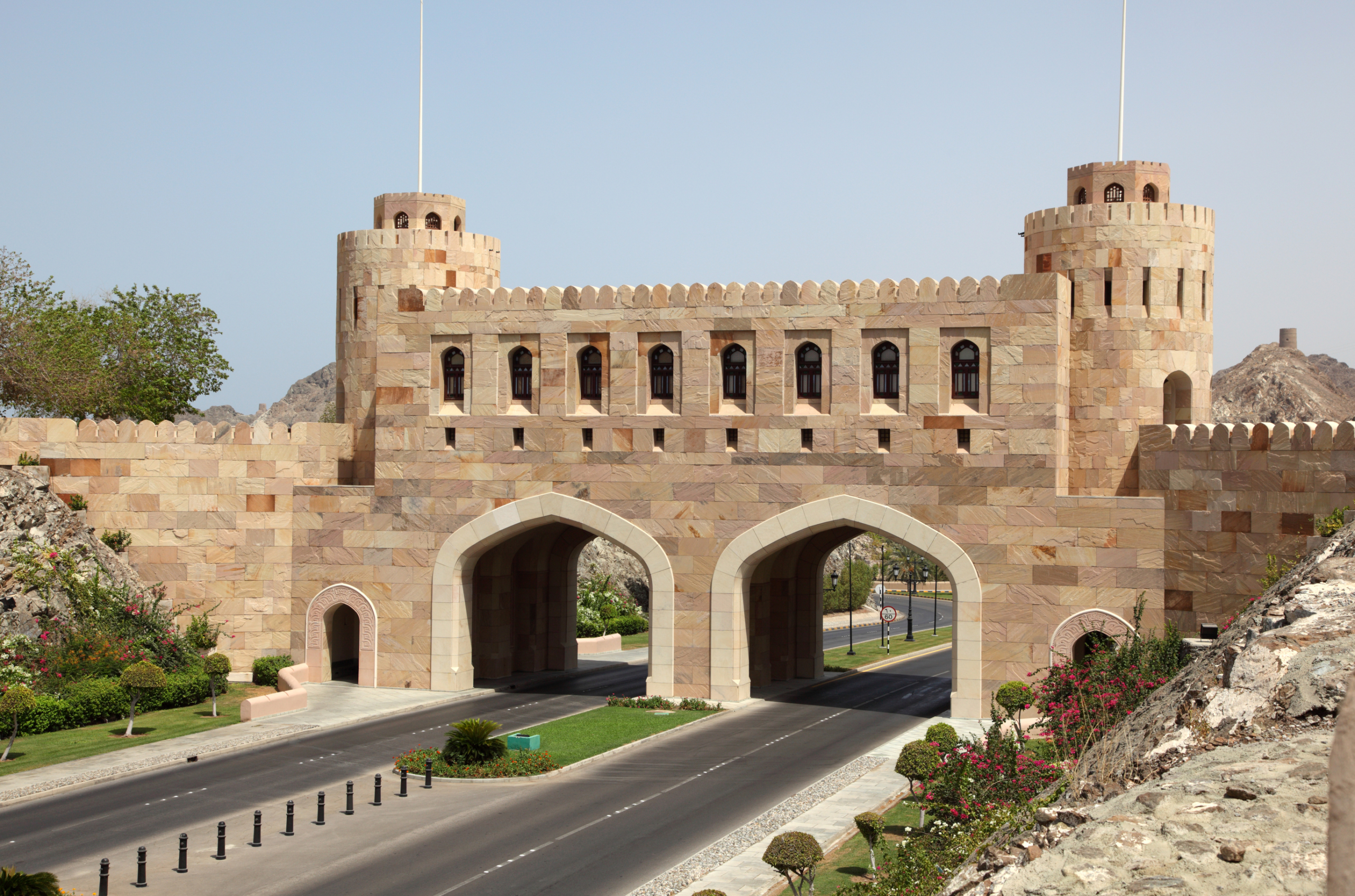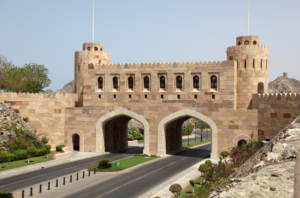

Unveiling the Secrets of Muscat Gate Museum Oman: A Journey Through Time
The Muscat Gate Museum Oman stands where ancient and modern Muscat meet. This remarkable structure serves as evidence of centuries of Omani heritage and culture.
We found that there was an architectural marvel at what used to be Muscat city’s main entrance. The museum takes visitors on a trip through time and displays everything from Neolithic artifacts to Portuguese colonial influences. It tells a compelling story of Oman’s rise from an ancient settlement to a bustling trading hub.
In this piece, you’ll learn about the museum’s architecture and its detailed historical exhibits. We’ll share the best ways to experience this cultural treasure. History enthusiasts and curious travelers will find our walkthrough of this iconic landmark both informative and engaging.
The Architectural Marvel of Muscat Gate
The Muscat Gate Museum struck us with its imposing presence. This architectural marvel combines traditional Omani design with defensive engineering principles. The structure shows how historical fortifications have transformed into cultural landmarks over time.
Traditional Omani design elements
The museum’s beauty shines through its authentic Omani craftsmanship. Several distinctive features make this structure remarkable:
- Massive wooden portals with traditional cut-out doors and ornate carvings
- Ceiling patterns adorned with palm ribs
- Wooden panels with decorative metalwork
- Traditional Omani stone construction throughout
Blend of defensive and cultural architecture
The structure’s combination of defensive functionality and cultural significance captured our attention. The walls slope strategically to deflect projectiles. Carefully placed loopholes gave defenders clear surveillance points. These sophisticated security measures proved the excellence of ancient Muscat’s military engineering.
Symbolic significance in modern Muscat
The Muscat Gate Museum represents more than history – it connects different eras. Its strategic position between the Corniche and the old walled city reflects brilliant urban planning. The building’s design balances security needs with climate protection through thoughtful window placement and ventilation systems.
This preserved structure stands as a patriotic symbol of Oman’s independence. The museum’s role makes it a vital cultural landmark. The building maintains its historical character while educating visitors, perfectly representing Muscat’s transformation from a defensive stronghold into a modern capital.

Journey Through Omani History
Our visit to the Muscat Gate Museum took us on an incredible journey through thousands of years of history that made this city what it is today.
Neolithic discoveries and ancient settlements
The archeological finds at Ras al-Hamra amazed us with stories of community life from the 6th millennium BC. Ancient fishermen’s burial grounds captured our imagination. These sites showed complex burial customs that gave us a window into prehistoric times. The sort of thing I loved was finding Harappan pottery pieces south of Muscat that proved early connections with the Indus Valley civilization.
Portuguese colonial influence and fortifications
The museum then guided us through the Portuguese era. Admiral Afonso de Albuquerque arrived in 1507 and changed everything. The Portuguese legacy lives on in Muscat’s impressive fortifications that include:
- The iconic Al Jalali Fort (Forte de São João)
- The strategic Al-Mirani Fort
- The defensive walls protecting the harbor
Evolution of Muscat as a trading hub
Muscat’s rise as a trading powerhouse captivated our imagination. The city was already a vital stop on the maritime Silk Roads by the 2nd century AD. We learned how it became the perfect port linking Asia, Africa, and Europe. Exotic goods flowed through – spices from Southeast Asia, Chinese silks, and Indian timber. The exhibits showed how Omani sailors became the world’s best navigators and merchants, playing a key role in this busy trade route.
Cultural Heritage Preservation
The Muscat Gate Museum houses an incredible exhibition that shows how Oman works to preserve its culture. This remarkable nation has found the perfect balance between keeping its traditions alive and embracing progress through the ages.

Traditional water management systems
The ancient aflaj irrigation system left us in awe. This UNESCO World Heritage site has helped sustain Omani civilization for more than 4,000 years. The engineering behind this system amazes visitors with its:
- Underground channels that collect mountain spring water
- Networks that distribute water efficiently
- Traditional methods of managing water rights
- Systems that communities maintain together
Historic urban development
Oman’s cities grew differently from its Gulf neighbors. The country’s development stayed true to its cultural heritage as cities expanded naturally around traditional social patterns. The Ministry of National Heritage and Culture plays a vital role in saving historic buildings. They make sure new construction includes traditional elements, which gives cities their unique blend of old and new.
Religious and social institutions
Oman’s religious harmony stands out as truly remarkable. The museum shows how the country welcomes people of all faiths while staying true to its Islamic roots. Mosques serve both as places of worship and community centers. The state manages these institutions to help bring people together. The traditional tribal system still shapes modern society, and tribal leaders help keep cultural traditions alive.
Interactive Museum Experience
The Muscat Gate Museum amazed us with its impressive modern interactive exhibits. We experienced an unforgettable blend of traditional artifacts and innovative technology that brought Oman’s rich heritage to life.
Multimedia exhibitions and displays
The museum’s state-of-the-art digital installations captured our attention immediately. A remarkable three-meter interactive touchscreen in the Aflaj Gallery let us explore ancient water management systems through stunning visualizations. The UHD cinema played fascinating cultural documentaries. The galleries featured 43 immersive digital experiences that kept us interested throughout our visit.

Guided tour highlights
Visitors can choose from three distinct tour experiences:
- General Tours (90 minutes) – Perfect for groups up to 14 people
- Private Custom Tours (2 hours) – An exclusive experience with traditional Omani hospitality
- Back-of-House Tours (2 hours) – A behind-the-scenes look at museum operations
The staff’s expertise stood out especially when they shared fascinating details about each exhibit enthusiastically. Their deep knowledge made our visit an enriching cultural trip.
Photography opportunities and viewpoints
The museum’s architecture creates spectacular photo opportunities we couldn’t ignore. The wide stairs leading to the museum gate revealed breathtaking panoramic views of the Corniche. Golden hour casts a warm, magical glow over the old city walls – a perfect time for photography enthusiasts.
The Collections Gallery features an innovative open-plan museum storage – the first of its kind in the region. Multimedia presentations in the Intangible Heritage Gallery showcase traditional Omani music and cultural practices. These create an immersive experience that awakens all senses.
Conclusion
Our experience at the Muscat Gate Museum gave us a deep appreciation for this remarkable institution that connects Oman’s past and present. The museum shows clear evidence of Omani ingenuity. Its architectural brilliance and advanced interactive exhibits stand out immediately.
Ancient artifacts blend naturally with modern technology to create a unique experience for history enthusiasts and casual visitors. The careful preservation of Omani heritage touched us deeply. The ancient aflaj irrigation systems and traditional architectural elements continue to shape modern development.
The museum sits at Muscat’s historic entrance, which perfectly symbolizes its purpose as a gateway to centuries of fascinating history. Tour guides share their knowledge passionately. The stunning photo opportunities add to the experience. This museum does more than display historical artifacts – it creates a living connection to Oman’s cultural heart.
Each visit uncovers new insights about this fascinating country’s transformation from an ancient settlement to a modern nation. The museum excels not just in preserving history. It makes the past relevant to today’s visitors through innovative presentations and interactive displays that engage people effectively. Ready to explore? Let’s craft your perfect journey today Book Now!
